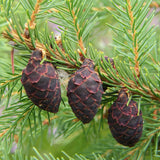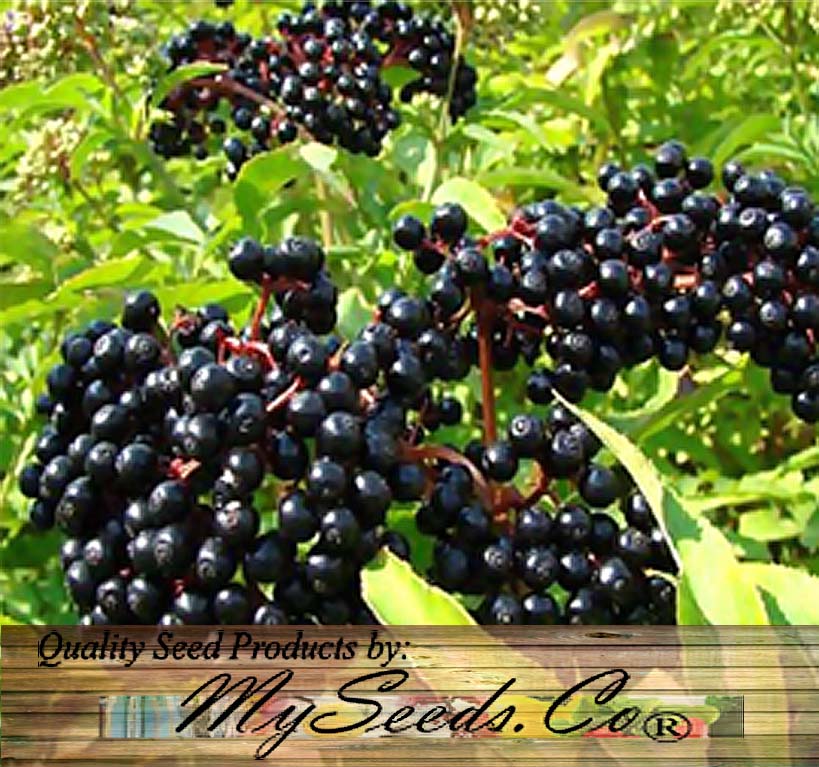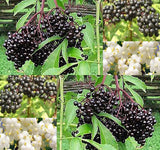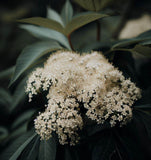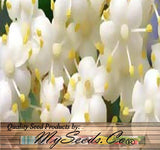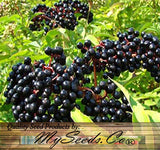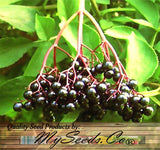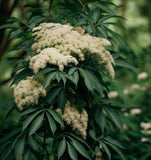Sambucus Canadensis (American Elderberry) Seedlings & Transplants Available for Spring Shipping
Seedlings & Transplants are shipped each Spring starting in Late March to Early April.
First come first Served.
NO shipping to AK, AZ, CA or HI
Bare-Root Size available:
12-18" Seedlings
Successful Planting Steps:
(1) Dig planting hole approximately 10% wider and deeper than seedling size.
(2) Plant Plug(s) and ensure top of plug is level with soil, back fill hole, and top with mulch. Keep mulch at least 1" away from plant stem.
(3) Water thoroughly at time of planting
(4) Use cage (or fence) as needed to prevent animal damage.
(5) Weekly watering is required until new growth is observed. Best practice is to deep soak the seeding once a week, on top of the every other day light watering. During hot/dry days, additional watering may be needed.
****************************************************************************************
Sambucus Canadensis (American Elderberry) is a deciduous shrub native to North America. It is highly valued for its ornamental features, medicinal properties, and the culinary use of its berries.
American Elderberry typically grows to a height of 5 to 12 feet (1.5 to 3.7 meters) and has a spreading, multi-stemmed habit. The shrub is known for its attractive compound leaves, which consist of 5 to 9 serrated leaflets. The leaves are dark green in color and provide a lush backdrop for the flowers and berries.
In late spring to early summer, American Elderberry produces clusters of small, fragrant white flowers. These flowers are arranged in large, flat-topped clusters known as corymbs. They are highly attractive to pollinators, including bees and butterflies, and add beauty and fragrance to the landscape.
Following the flowering stage, American Elderberry forms clusters of small berries. The berries are initially green and gradually turn dark purple to black when fully ripe. They are edible and have a tart flavor, making them suitable for culinary uses such as jams, jellies, pies, and wine. It's important to note that the berries should be cooked before consumption, as the raw berries may cause stomach discomfort.
Apart from its culinary uses, American Elderberry has a long history of medicinal use. The berries are rich in antioxidants and vitamins, particularly vitamin C. They have been used in traditional herbal remedies to support immune health, alleviate cold and flu symptoms, and promote overall well-being. The flowers and bark of the shrub are also used in some traditional herbal preparations.
American Elderberry is relatively adaptable and can grow in various soil types, including moist to wet soils. It prefers full sun to partial shade exposure. The shrub is known for its vigorous growth and can form dense thickets if left unchecked. Regular pruning can help maintain its shape and encourage optimal fruit production.
In addition to its practical uses, American Elderberry is often planted for its ornamental value. The clusters of white flowers and dark berries add visual interest to gardens and naturalized areas. The shrub is also valuable for supporting wildlife, as birds are attracted to the berries and the dense foliage provides nesting sites and shelter.
Botanical Name : Sambucus canadensis
Common Name : American Elderberry
Height : 10-15 ft
Spread : 5-12 ft
Germination Info : Seed requires 30-60 days warm stratification followed by 90-120 days cold
Hardiness zone : 3-9
Average seed per ounce : Approx. 10,000

